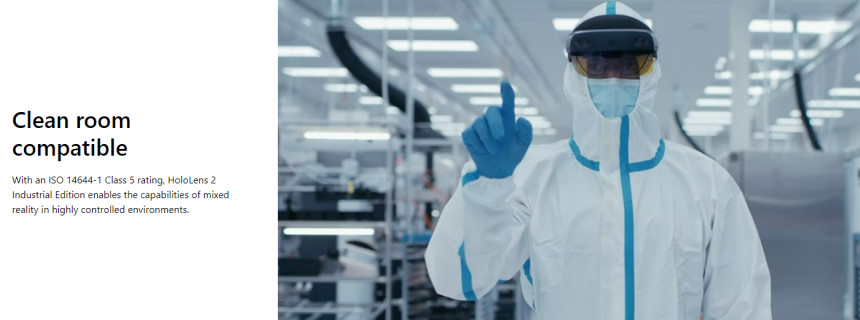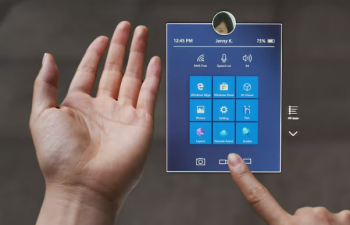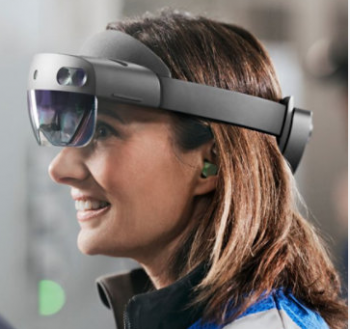When Kellen Reason, the director of technology at the College of Veterinary Medicine, learned that there were some funds available through the James and Lynelle Holden Fund to support the College, he immediately had an idea.
The Holden Fund was established in 1941 and was made available to Michigan State in 1996. Its aim was to provide continuing resources that the College can use to improve computerized education, research, and service programs. In particular, the fund was designed to assist the College in developing new, cutting-edge programs that leverage technological advances.
Reason had been considering how the College might use augmented reality in a teaching environment, and with the resources available through the Holden Fund, he and his team purchased two Microsoft HoloLens 2 headsets. These head-mounted displays are meant for an environment like the clinic; they are made to be cleaned and disinfected in between use.


There are many potential uses of the HoloLens headsets, but the focus for Reason’s team right now is to leverage the ability of the HoloLens to generate real-time closed captions for deaf and hearing-impaired students working and learning in the clinic. “The idea is that students put on the device, the device authenticates using an iris scan and logs them in, and then the application is opened through hand gestures,” explains Reason. “All of the audio around is being captured all the time. Depending on where the audio is coming from, the machine learning algorithm determines if the audio is coming from the same person or different people, and then it breaks up the captions accordingly. This allows us to block the text out in a way that is very readable.”
Reason and his team are still working to set up the login process for these headsets, as the iris scan feature is a fairly new technology. However, he’s hopeful that more students will soon get the chance to experience all that the headsets can do.

“The implementation of this new technology has incredible potential to help deaf and hearing-impaired students in the clinic,” says Douglas Freeman, interim dean of the College. “The endowment from the Holden Fund was set up in a way that allowed us as a College to decide how we could best use the funds within the parameters that James and Lynelle Holden outlined. We appreciate this flexibility, and I am excited to see these funds being used to support our students and expand the inclusivity of our College.”
In the coming months, Reason’s team will continue the implementation process of these headsets and seek feedback from students on the ease of use and effectiveness of the goggles. Reason hopes to have everything in place by June of this year.
